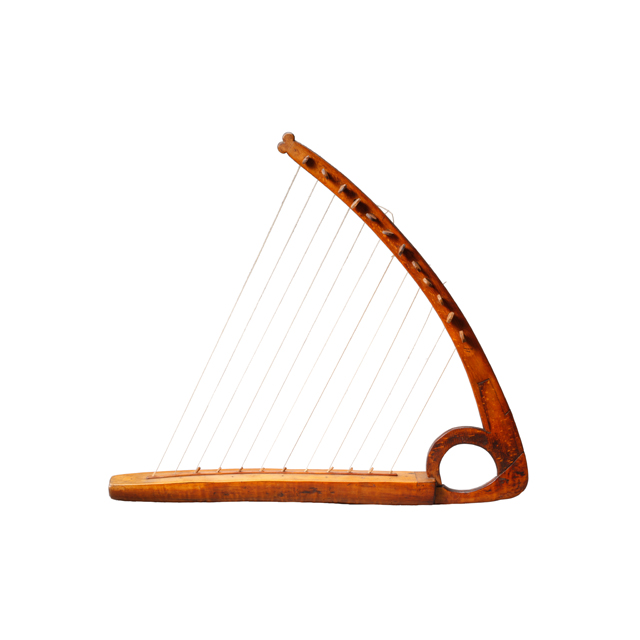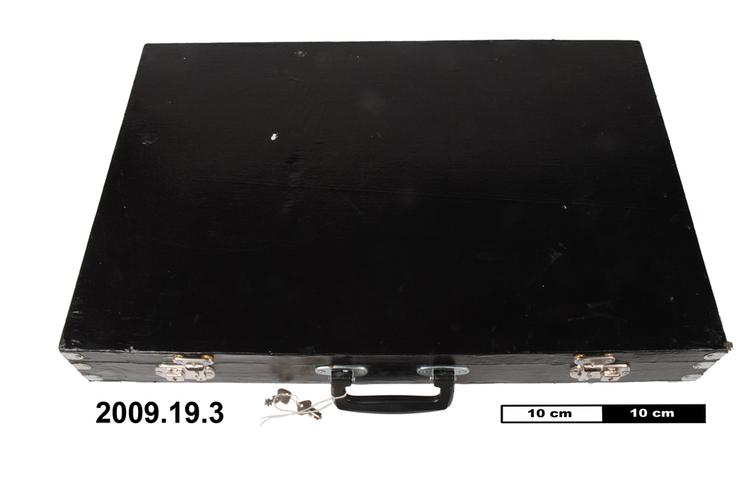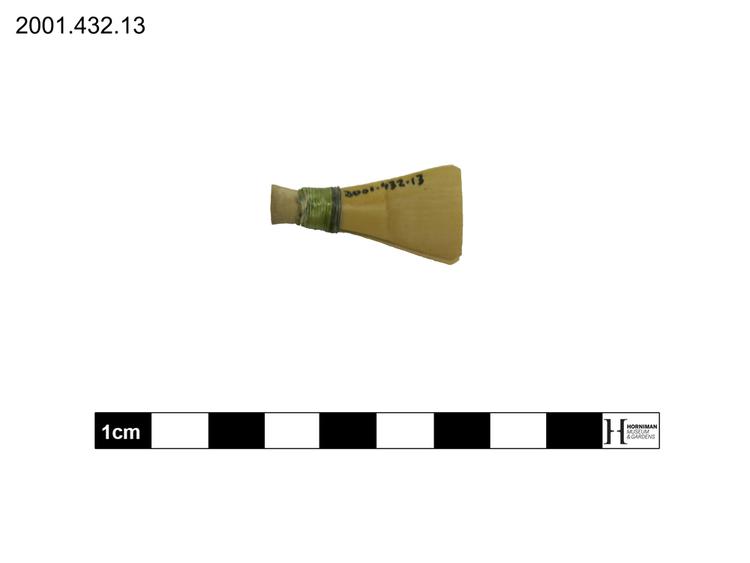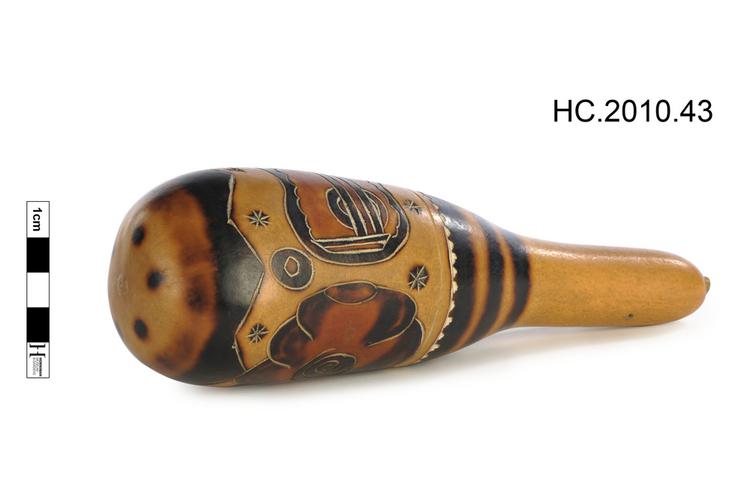
Angular harp with twelve gut strings. The body is hollowed out of one piece of wood, possibly maple, and has a rounded back and straight ends. At one end of the body, the wood extends forward to form a thick bracket that carries the neck. The neck is flat in section and gently curved, it ends in a rounded, bifid finial. At its lower end, the neck is supported by an arched buttress which, standing on the end of the soundboard and spanning over the bracket, gives the whole instrument something of the appearance of an open safety-pin. The twelve gut strings are tuned by round-headed pegs that pass through the neck. The strings are secured by passing through holes in a spine that is attached to the soundboard, where they are pinned into place with small plugs of wood.
This instrument was purchased at the Universal Exhibition in Paris in 1867. The original catalogue description notes that it had 'twelve strings of horse-hair, ten black, and the two longest white, each string consisting of from six to eight hairs' (Carl Engel 1874. 'A Descriptive Catalogue of the Musical Instruments in the South Kensington Museum'. London: Eyre & Spottiswoode, pp 202-203).







